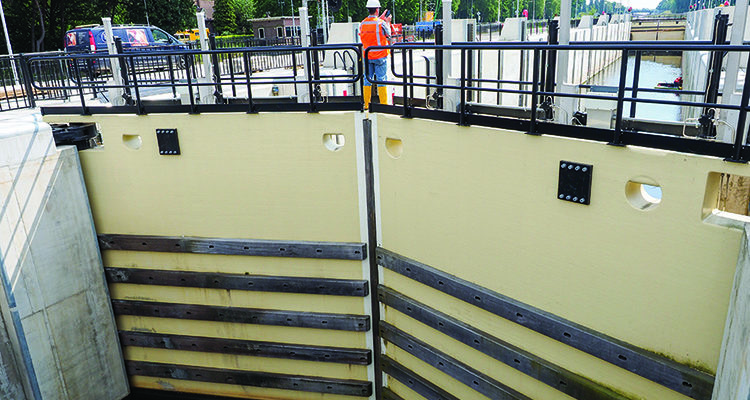Over the past 15 to 20 years, hydraulic structures using FRP composites have been designed, manufactured and installed in several countries, including the United States, the Netherlands, Spain, China, the United Kingdom and France. Many of the original waterway navigational structures around the world have far exceeded their original design life – some to the point of failure. Corrosion-resistant, low-maintenance composite hydraulic structures are poised to take their place in locks, dams, levees, pump stations and other systems that involve valves, gates, walls, piling, mooring facilities and more.
As in any composite application, careful examination of design considerations for hydraulic structures are paramount. Because the market encompasses a bevy of structures and accompanying components, it’s impossible to cover specific design principles within this column. For instance, the design process for a vertical lift gate varies from that of a stoplog on a dam. However, there are several overarching considerations, five of which are presented here: design requirements, material selection, structural concepts, deflection requirements and cost.
Before examining those considerations, it’s important to note work that has already been done to create best practices and design standards for hydraulic structures. In 2018, the U.S. Army Corps of Engineers led publication of a guide specification entitled “UFGS 35 20 15 FRP Composites for Low-Head Water Control Structures” that covers stoplogs, vertical lift gates, weir dams and more.
Another effort is currently underway by PIANC, the World Association for Waterborne Transport Infrastructure. In order to identify “best practices” of composites in the hydraulic structures market and develop applicable guidance documents, PIANC established an international working group – WG-191, Composites for Hydraulic Structures – in 2016. The WG-191 has developed a draft report entitled “Composites for Hydraulic Structures,” which was submitted to PIANC’s Inland Navigation Commission in February for review, editing and publication.
The report summarizes state-of-the-art FRP composites for hydraulic structures, including material characterization, engineering (science) evaluations, design, construction, repair and cost analyses. Emphasis is placed on successful applications of composites in waterfront, marine and navigational structures, such as lock doors, gates, in-situ and under water repair, and flood protection systems.
In particular, the report highlights several applications of FRP composites for hydraulic structural systems that enhance durability, reduce downtime to replace or rehabilitate traditional structures, reduce embodied energy and exhibit other advantages. (Two of the applications are depicted in this column.) Ideally, the contents of this report will help designers and promoters of hydraulic structures by providing guidance to develop and operate safe, economical, durable structural systems for waterways utilizing FRP composites.
In the meantime, here is an overview of the general design considerations for composite hydraulic structures:
Identify Design Requirements
The requirements of a new FRP structure are usually based on the requirements of the existing structure made of conventional materials, including the geometric boundary conditions and various loads on the structure. Geometric boundary conditions focus on the dimension of the structure, fatigue cycles, sustained stresses and environmental conditions, such as the range of operating temperature. The loads considered may include complex wave loads, dead load, torsion and longitudinal loads, ice loads, wind loads, water flows and potential barge collisions.
Consider Material Selection


